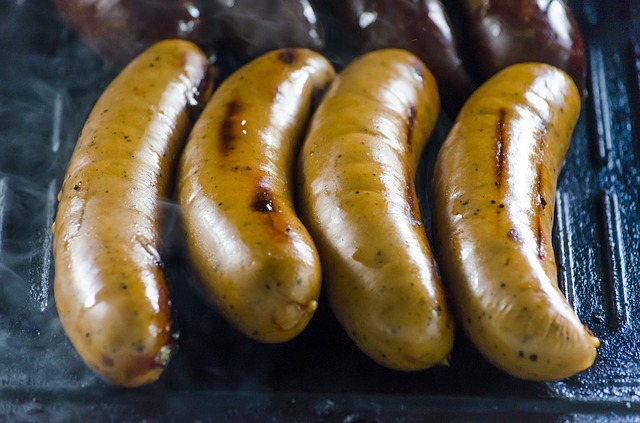What Should A Metal Guitarist Learn Pt3 |
|
|
|
|
|
| Sep 6 2015, 10:52 AM |
|
By now you're hitting power chords and starting to learn some of the simpler classic metal riffs out there. Something doesn't sound right, however. When you put your hand to the instrument it's all just mush. Just noise.
The Distortion Dilemma You've got a much hotter response when you touch those strings now and every bit of movement is going to be picked up and amplified out of your...err... amplifier. I remember the first time I tried to play through an amp and I felt so disheartened, it sounded that bad. Sooner or later, you realise it's not just about making the sounds that you want happen, it's about blocking the ones you don't want. We call it MUTING. There are two types of muting. Muting and palm muting. The second is an aesthetic sound choice, done for effect, but the first is an essential need of guitar playing. It's the first type of muting we're discussing today and the most important, if we're to make any kind of progress. Muting involves using both hands to control and reduce the amount of unwanted noise caused by vibrating strings and by the electrified signal which manifests as hiss coming through your amp's speaker. Why do the strigns vibrate? Movement. If you accidentally knock your guitar, even lightly, it causes an audible reaction. If you press down a string and then remove your finger, it sounds the string. It's all sympathetic vibration. So we have to do what we can to reduce these accidental knocks & buzzes. The strumming hand, which we will know call the picking hand (because strumming isn't, you know, metal) can be used to cover the strings that aren't being played, which is done by resting the side of your hand or the fingers lightly on the strings. If you are playing the lower strings then you may rest the little finger edge of your hand over the higher strings, the G, B and top E. If you're playing the higher strings and want to prevent the lower strings from buzzing then you could use either the thumb side of your picking hand to rest lightly on the lower strings or use the edge above your pinky to rest on them. It's not an exact science because everyone's hand is a different shape and size and the way our hand rests against the guitar isn't the same. Our fretting hand also plays a part. Generally speaking, we can use the underside of our fingers (mainly near the index finger end) to lightly cover the strings that are not being played. If you're playing something on the low strings then your fingers will be reaching over the neck anyway to fret them. If you're playing single notes then this will be easier to demonstrate and understand. When we're beginners we tend to be very awkward with how we place our fingers on a note. Our finger are like jelly. They wobble about and we struggle to maintain a solid connection without our knuckle joint collapsing, am I right? It's like trying to play guitar with a bunch of hot dogs instead of fingers. Let's just allow that mental image to sit with us a while before moving on.  Ok, a lot of people over arch their fingers when fretting notes. If you were fretting a not on the G string and you're over arching your finger, that means there's no contact with the B and top E strings with your fretting hand at all. So there's nothing to stop those strings ringing in sympathetic vibration when you remove your finger from that note and fret another. The only muting you may have is your fretting hand but we want our muting to be as rock solid as it can be. So, therefore, it makes sense to reduce the angle of your finger so that it closer to being flat against the neck. This will allow the underside of your index finger to provide extra muting - magic, eh? Even if you're playing something with your 2nd, 3rd or 4th finger, you can still use the index side of your fretting hand to 'cover' the strings. So, between your picking hand and fretting hand you have a way of covering the unused strings to reduce unwanted noise. It is annoying and difficult, sure, but it does soon become second nature. It makes the difference between sounding like ass and being able to recognise the riffs that you're whacking out through that amp. You've heard the phrase, with great power comes great responsibility - well it's a bit like that with playing through an amp with distortion, only much more important. In pt 4 we will explore palm muting - join me then! Here is pt 4 This post has been edited by Ben Higgins: Sep 10 2015, 10:10 AM |
|
|
||
|
|
|
|
| Sep 17 2015, 07:59 PM |
|
I'm finding this series very valuable, thanks Ben.
One problem I have is when doing wide vibratos, especially when the note is bent. It's inevitable that the adjacent strings will be touched and untouched as the vibrato goes to and fro, and I tend to get a lot of noise when an adjacent string is untouched as the vibrato moves away from it. I've looked at your vibrato lessons, but don't quite see how best to avoid that problem. -------------------- Cyber-industrial music and video animations:
https://vimeo.com/channels/thedignitymachine https://vimeo.com/channels/somewheretohide Facebook: https://www.facebook.com/RodrigoSpacecraft |
|
|
||
1 User(s) are reading this topic (1 Guests and 0 Anonymous Users)
0 Members:



















